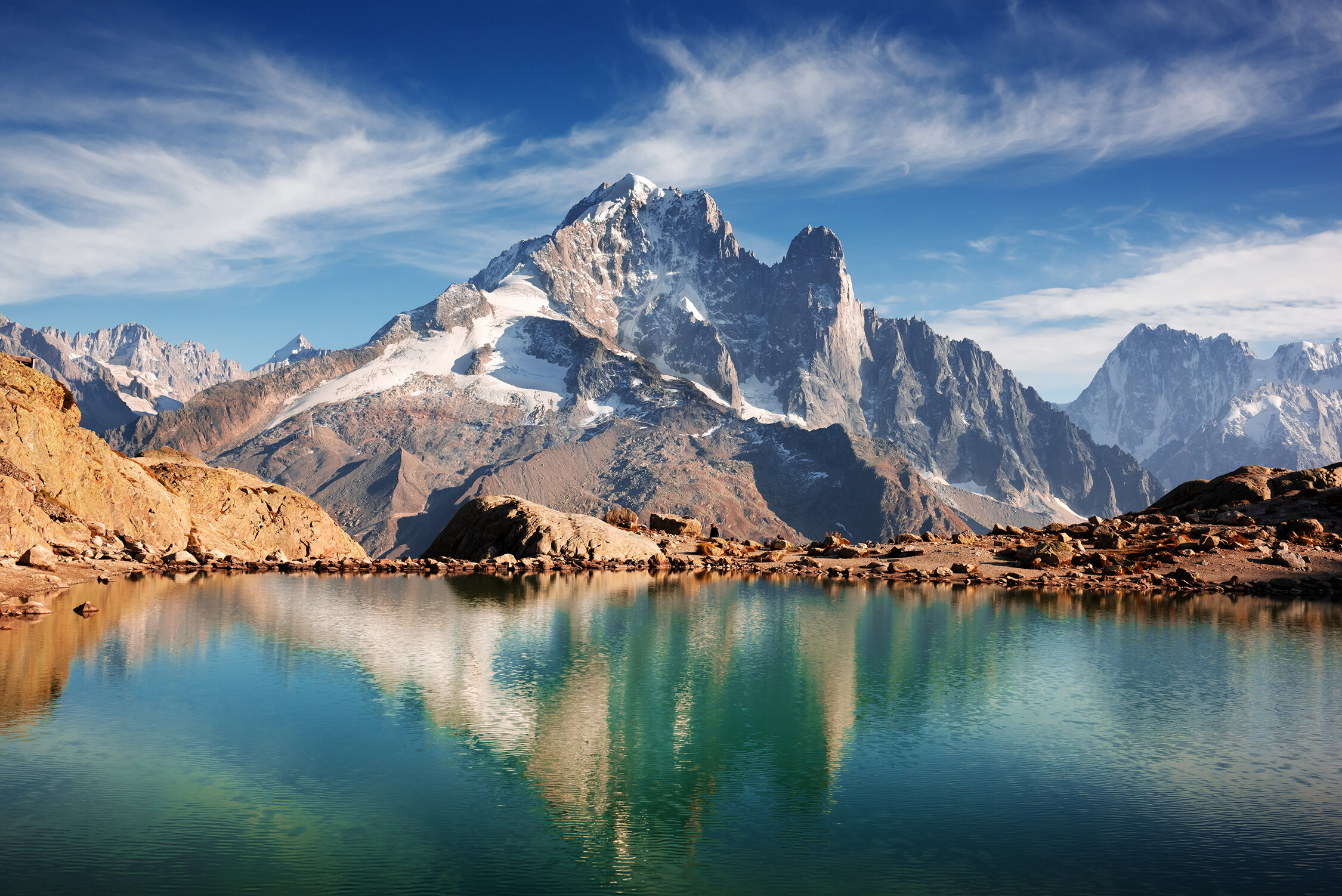This is the view from Lac Blanc to the Aiguille Verte. You can also see the Grande Jorrasses on the right, one of the three great north faces of the Alps.
One of the grand highlights of the Tour du Mont Blanc, and an absolute must-do, is the hike to Lac Blanc, an alpine tarn dramatically situated in the Réserve Naturelle des Aiguilles Rouges. Lac Blanc consists of two lakes, a larger upper lake (Lac Blanc proper) and a smaller lower lake. The two are joined by a small stream. As you can see from the photo, the scenery is outstanding!
The mountain standing dead center in the photo is called the Aiguille Verte (13,524 feet/4,122 meters). The word aiguille means “needle” in French and you’ll find lots of mountains and rock spires on the Tour du Mont Blanc bearing the “aiguille” designation. The Massif des Aiguille Rouges, of which Lac Blanc is a part, consists of an entire ridge of red needles that runs for miles in a northeasterly/southwesterly direction on the north side of the Chamonix Valley. The Aiguille du Belvédère, Aiguille Crochues, Aiguille de la Floria, and the Aiguille des Chamois are just a few of the notable peaks. Lac Blanc even has its own aiguille, appropriately named the Aiguille du Lac Blanc.
While the Aiguilles Rouges are interesting to look at, and the nature reserve in particular is a very special haven for alpine wildlife, it’s the view of the Mont Blanc Massif on the opposite side of the Chamonix Valley that most hikers climb to Lac Blanc to see. The Aiguille Verte (pictured) is a full 1,766 meters (5,800 feet) higher than Lac Blanc itself. It’s these dramatic elevation changes that make the Mont Blanc region so striking. For example, more than 12,000 feet of elevation separates the cafés in downtown Chamonix with the summit of Mont Blanc. Mont Blanc is just off the right side of the photo.
There’s a little hut perched at Lac Blanc called Le Refuge du Lac Blanc. The Lac Blanc Refuge offers dormitory style accommodation with half board (dinner and breakfast). The restaurant at the refuge serves delicious local specialties including, crèpes, savoyard omelettes, salads, guide’s plates, and my favorite, tarte aux myrtilles (blueberry pie). If you time your Tour du Mont Blanc just right, then you’ll see locals picking wild blueberries on the trail. The locals use the same ancient hand tools that they’ve used for centuries, and the blueberries are delicious! The refuge also operates a buvette serving hot and cold drinks, soups, sandwiches, and take away items for passing hikers and day trippers. Cash only.
Most people hike the Tour du Mont Blanc in a counterclockwise direction beginning and ending in Chamonix. When completed in this direction, Lac Blanc usually falls on the last day of the tour. Most fit hikers will complete the walk from Argentière to the La Flégère lift via Lac Blanc in around four hours. The walk from Argentière to the Plan Praz cable car station via Lac Blanc takes around six hours. Walking into Chamonix centre ville takes about the same time, unless you stop and linger at the Chalet Floria along the way which is highly recommended. You can also hike the Tour du Mont Blanc in the opposite direction which has advantages.
Do you have questions about the Tour du Mont Blanc? Would you like to hike the Tour du Mont Blanc? We’ll make a trip just for you. Click here to get started.











